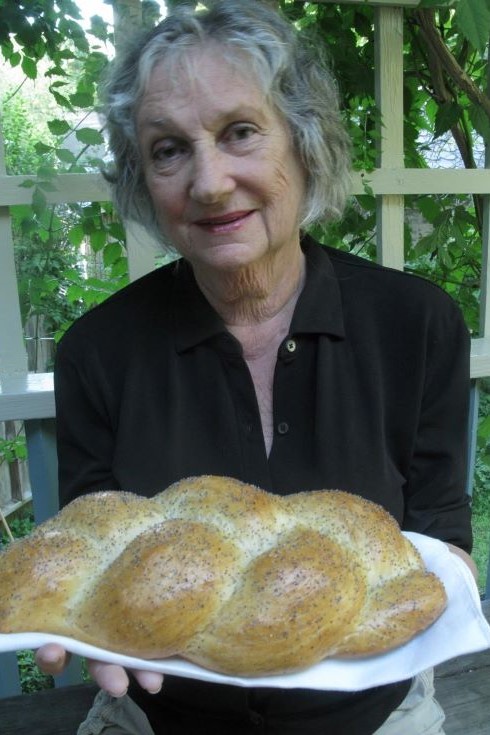Add Some History to Your Holiday Table
Sept. 7, 2018
By Gabrielle Rossmer Gropman
Do you want to add some history to your holiday table? "The German Jewish Cookbook: Recipes & History of a Cuisine" gives you German-Jewish recipes with the backdrop of German culinary history.
 After touring parts of the U.S. and doing cooking demonstrations, my daughter and co-author, Sonya Gropman, and I traveled to Germany in early April for a few special events related to our cookbook. Our previous experiences in Germany showed us a vast amount of interest in all things Jewish, especially things about the real lives of Jewish people, both historically and in contemporary times. Our stories about how Jews ate when they were German Jews — that is until the end of the 1930s — are of great interest to the public that shows up for our events. This includes foodies, peaceniks, Jews, non-Jews, chefs and people of all ages.
After touring parts of the U.S. and doing cooking demonstrations, my daughter and co-author, Sonya Gropman, and I traveled to Germany in early April for a few special events related to our cookbook. Our previous experiences in Germany showed us a vast amount of interest in all things Jewish, especially things about the real lives of Jewish people, both historically and in contemporary times. Our stories about how Jews ate when they were German Jews — that is until the end of the 1930s — are of great interest to the public that shows up for our events. This includes foodies, peaceniks, Jews, non-Jews, chefs and people of all ages.
Bamberg, the city where I was born, has a magnificent medieval area. The famous Bamberg Cathedral features beautiful sculpture, and the legendary food traditions speak for themselves. Bakers make a particularly flaky small croissant-like roll calle a Bamberger hoernchen (little horn). The farmers market sells produce from nearby farms including greens, radishes, carrots, asparagus (the season had just begun), to name a few items. There are several traditional bakeries, which have been successfully fighting the trend of mass-produced baked products. Two of those bakers, Edgar Kerling and Alfred Seel, regularly bake the challah that Germans ate before World War II, called berches. Both bakers are aware of the Jewish roots of the bread. Members of the small Jewish liberal congregation in Bamberg order it regularly from Mr. Seel, but they primarily continue to bake this white braided loaf with poppy seeds on top to please their non-Jewish clientele. Sonya interviewed both men for a feature article in TASTE Magazine.
In Bamberg, we gave a book talk in the centuries-old Historical Museum right behind the Cathedral. Emmy Zink, who we highlight in the book, joined us even though she is now virtually blind and in her mid-90s. She talked about the time when she, as a young girl, helped her mother working in the household of a Jewish family to whom she felt very close. She is a zeitzeuge (historical witness) with whom we have become very close.
Next, we traveled to Berlin where highlights of our stay included a well-attended bookstore talk at the English-language bookstore, Shakespeare and Sons, and a pop-up dinner that we prepared in conjunction with our chef/host Ulrich Krauss, owner of the Zagreus Projekt, a unique venue for art and dinners. In this case, we offered a special German-Jewish menu and a chance to talk about the book. We were in the kitchen, yes, but we deferred to the chefs and the meal was delicious. Learn more about our visit on NPR radio station, KCRW-Berlin, where interviewer Sylvia Cunningham asked great questions.
Overall, the sense of cooking from our book in Germany is so different because the food is familiar to people there. Almost every German can relate some, if not all, of the recipes to the kitchens of their grandmas and we had a few experiences where the recipes brought tears of remembrance to non-Jews who ate food that held strong memories from their childhood, just as the same food does for Jewish audience members in New York.
Gabrielle Rossmer Gropman, ‘59, with her daughter, Sonya Gropman, is author of "The German Jewish Cookbook: Recipes & History of a Cuisine," published in the HBI Series on Jewish Women.